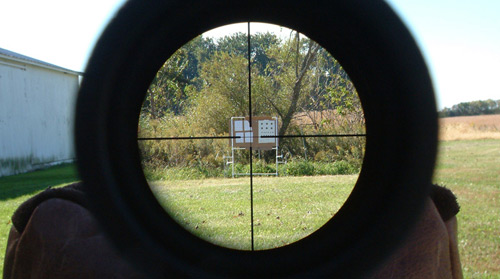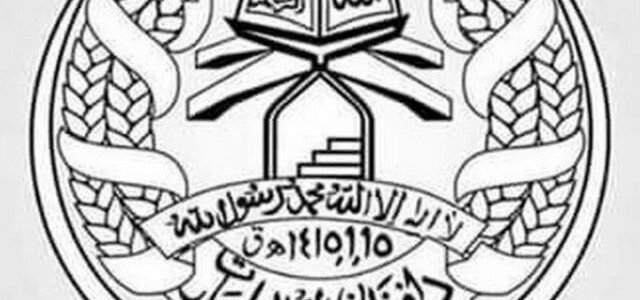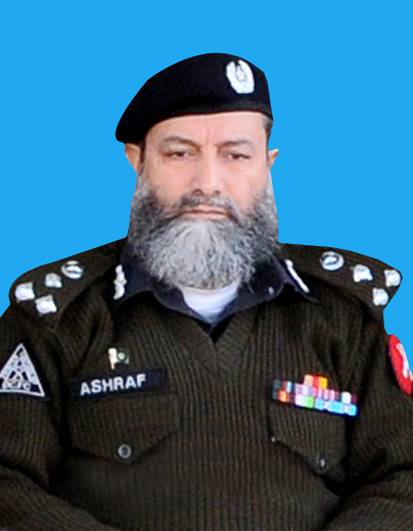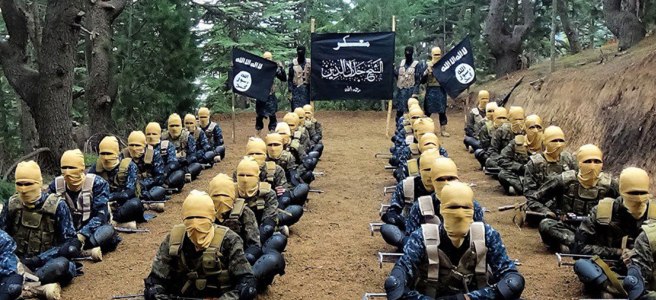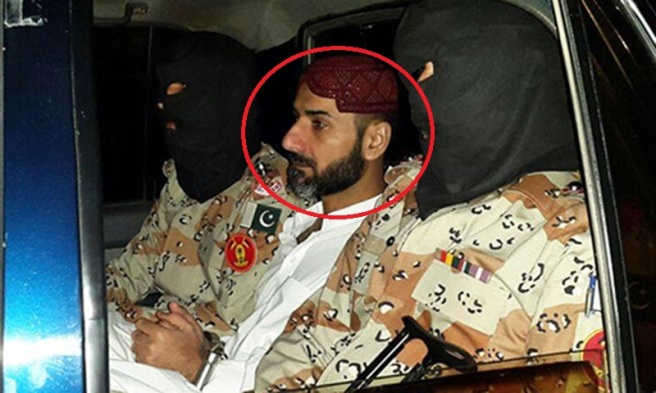On 30th December Afghan Taliban, also known as Islamic Emirate of Afghanistan (IEA), released a very long message on their Al-Emarah network detailing their ‘military achievements’ for the year 2017. Below is the message released by IEA on as it is basis:
Military achievements of the Islamic Emirate in the year 2017
The year 2017 was fraught with frequent conquests, victories and tremendous achievements for the Islamic Emirate which can hardly be covered in one article. The detailed figures of the daily assaults of Mujahidin, their attacks, IED blasts on the enemy vehicles and convoys, missile strikes and various other operations which were regularly published and broadcasted everyday on ‘Alemarah’, the official website of the Islamic Emirate and on other social media platforms like facebook, twitter, whatsapp and telegram etc. cannot be enfolded in one essay, therefore, in the following lines an effort has been made to accommodate some significant achievements of Mujahidin during last year, as a handful out of a heap.
In the first month of the previous year, the Islamic Emirate published the assessment of administration in all areas under its control. It said that 41 districts of Afghanistan are fully controlled by the Islamic Emirate, while tens of other districts are under the control of our heroic Mujahidin with the exception of their centers. In the same month, guerilla attacks were accelerated and intensified in the strategically important cities of Afghanistan. Fifth directorate of national security zone in Kabul was the witness of huge blasts, while a crucial meeting of officials of the national security organ in Lashkargah city of Helmand province became the target of sacrificial attack in which 16 intelligence officers were killed. Besides these meticulous attacks, Jihadi operations remained incessant on the daily basis throughout the country despite the chilly cold weather. In the same month Zabihullah Mujahid, spokesman of the Islamic Emirate, sent an open letter to the American president Donald Trump to convince him to accept the prevailing ground realities in Afghanistan and the region.
In February 2017, the commander of American forces General Nicolson confessed that their forces are stuck inside Afghanistan and see no perceptible progress in the battlefield. In the same month Shorabak district in Kandahar province was completed liberated from the enemy in which huge amount of arms and ammunition were seized by Mujahidin. Jihadi attacks were also accelerated in ‘Darqad’ district of ‘Takhar’ province. Besides various other achievements in these battles, a helicopter of the internal mercenary army was hit by Mujahidin which crashed in Archi district of Kunduz province. Another significant move in February was the killing of 11 stooge soldiers by an infiltrator Mujahid in Lashkargah city, the capital of Helmand province who then managed to join Mujahidin of the Islamic Emirate in the area. In February, His Excellency Amir-ul-Momineen Sheikh Hibatullah Akhunzada, the head of the Islamic Emirate issued a statement in which both Mujahidin and the general masses were asked to fully participate in the plantation campaign for making the country green and pleasant. This announcement was warmly welcomed by the people and numerous saplings were planted throughout the country.
In March 2017, fierce Jihadi operations were launched in the capital city Kabul. On 1st March the Recruitment center, the directorate of sixth security zone and the center of 241 brigade were brought under successive self-sacrificial attacks. According to verified reports tens of stooge forces were killed and wounded in these attacks. A few days later Tala-o-Barfak district of Baghlan province was completely liberated and captured by Mujahidin. Similarly an American reconnaissance drone was hit and brought down by Mujahidin near the strategic Bagram airbase. In another storming attack Neish district in Kandahar province was conquered by Mujahidin of the Islamic Emirate in which 20 internal soldiers also surrendered.In the same month, meticulous martyrdom attacks were carried by our heroic Mujahidin on the strategic Khost airport in which heavy financial losses and casualties were inflicted on the enemy. Similarly, an infiltrated Mujahid courageously killed 5 American invading soldiers in Helmand province. In the second half of March, a huge military base of the mercenary national army was conquered by Mujahidin. Similarly the most strategic Sangin district in Helmand province was also completely liberated from the enemy and the white flag of the Islamic Emirate was hoisted on its center. Though it was extremely cold in March in the central parts of Afghanistan, but still the weather conditions could not halt the warm Jihadi activities of Mujahidin. In Saripul province, the stooge enemy was so confused and embarrassed by Mujahidin’s successive attacks and progress that the provincial council expressed its concern about the fall of provincial capital. In the same month, vast areas of Shah Wali Kot and Khakraze districts in Kandahar province were liberated while several military posts were captured. At the end of March, the ‘Invitation and Guidance’ Commission of the Islamic Emirate announced that 565 workers (including officials and forces) left the puppet regime and amalgamated with Mujahidin.
In the beginning of April, the Jihadi supporters of their surrendered leader ‘Hikmatyar’ announced their schism from his party and unification with the Islamic Emirate. On Friday 21st April, unprecedented huge and fatal self-sacrificial attacks were carried out on Shaheen corps in Mazar-i-Sharif in northern Afghanistan. In this deadly attack more than 500 stooge forces, most of them notorious commando forces, were killed and similar more were wounded. This massive attack stunned the whole puppet regime which announced a day of national mourning. Similarly the so called defense minister of the stooge admin and the chief of staff of mercenary army resigned from their posts. Following this massive attack, a tactic blast took place on the notorious armed militia, locally called Campaign, near the old airport in Khost province in which tens of American mercenaries were killed and wounded. On Friday 28th April, ‘Mansoori’ operations were announced and launched by the Islamic Emirate to accelerate Jihadi attacks throughout the country. On the very first day of Mansoori operations, besides several minor and major attacks, Zebak district in Badakhshan province was completely liberated while the main road between Kunduz and Baghlan provinces was also controlled by the heroic and devoted Mujahidin of the Islamic Emirate.
On Monday 1st May, Ghormach district was liberated by Mujahidin while ten other military posts were conquered by them in the adjacent Sayyad district of Saripul province. In the meantime Mujahidin launched widespread attacks in Khan Abad district of Kunduz province in which the main Takhar road was blocked for the enemy and several villages were cleared from the stooge forces. Simultaneous with Khan Abad attacks, Jihadi operations were launched in various other areas and the center of Qala-i-Zal district came under Mujahidin’s control. On the other side, crucial attacks were initiated in several districts of Kunar province by Mujahidin, in which heavy financial losses and casualties were inflicted on the enemy besides conquest of numerous military posts. Mujahidin started operations on Waghaz district in Ghazni province by conquering all military posts except the district center. Similarly a fierce encounter in Shahjoi district of Zabul province left 25 stooge soldiers dead.
In the closing days of May, heavy blows were given to the enemy in Shah Wali Kot district of Kandahar province. In two successive attacks, two bases of the enemy were conquered and overall 80 stooge soldiers were killed. The last fatal attack of this month was carried out against the Quick Reaction Force in Khost province in which 22 mercenary forces were killed.In June last year, huge Jihadi operations were launched in Imam Sahib district of Kunduz province. Similarly in Khas Uruzgan district of Uruzgan province five military post were conquered by Mujahidin while vast areas in Khawaja Sabzposh district of Faryab province were cleared from the enemy. In the eastern Nangarhar province, 4 American invading soldiers were killed by an infiltrated Mujahid while a meticulous self-sacrificial attack was carried out on a gathering of mercenary militiamen in Helmand province in which tens of these forces were killed and wounded. In this month Darzab district in Jozejan province was surrendered to Mujahidin including 60 stooge soldiers. Similarly, the recruitment process of unrestrained Arbaki militiamen in Chamtal district of Balkh province was sabotaged and several Arbakis were killed in a successful Mujahidin attack. In the ending days of June, hundreds of prisoners were set free by Mujahidin in different parts of the country as a sign of good-will of the Islamic Emirate and this move was widely welcomed by the pious and peace-loving masses of our country.
July 2017 was fraught with significant victories and Jihadi achievements. In the beginning of this month, Mujahidin launched their attacks near the center of Kunduz province by conquering several military posts in the suburban areas and a helicopter of the internal stooge enemy was also hit and destroyed during these operations. In the first half of July, the stooge enemy forces launched widespread assaults in Nad Ali district of Helmand province but they faced tough resistance from our heroic Mujahidin. In this fierce battle of Nad Ali district, tens of stooge commando forces were killed and wounded. It was confirmed by the Pentagon that considerable losses and casualties were inflicted on the freshly deployed American forces during this fighting. Though a heroic Jihadi commander of the Islamic Emirate (named Haji Hewad) was martyred in this fighting but on the other hand colossal losses and casualties were inflicted on the enemy too. In this month, a police convoy in Khak-i-Jabbar area in the south of Kabul came under Mujahidin’s attack in which tens of mercenary policemen were killed and wounded while a large amount of equipment was also seized by Mujahidin. In the same month several foreign invading forces including an American colonel were killed. In Arghandab district of Zabul province and the Central Baghlan district of Baghlan province several military post were captured from the enemy. In Grishk district of Helmand province massive attack was launched by Mujahidin and the defense line of the enemy was dispersed by self-sacrificial attacks, in which tens of enemy soldiers were killed and wounded. It is worth-mentioning that in Grishk fighting, Abdul Rahman Khalid, the beloved son of head of the Islamic Emirate Amir-ul-Mominin Sheikh Hibattulah Akhunzada also carried out a self-sacrificial attack and gave his life for the lofty cause of Islam and freedom of our country. Though in this fighting, Mujahidin could not capture the district but the enemy forces were badly crushed by inflicting huge losses and casualties on them. Similarly in Khawaja Sabzposh and Dolat Abad districts of Faryab province and Khan Abad district of Kunduz province fierce attacks were carried out by Mujahidin, in which several areas were controlled besides inflicting losses and casualties on the enemy. In July Guzargah-i-Noor district of Baghlan province was completely liberated from the enemy while 20 notorious Arbaki militiamen were killed in confrontation with Mujahidin in Tagab district of Badakhshan province.On Sunday 23rd of July, the important Tewara district in Ghor province and the strategic Kohistanat district in Faryab province were liberated and controlled by Mujahidin. In wake of these victories, local people rose up against the offences of local stooge forces in Shahrak district of Ghor province. They liberated the whole area and then announced unification with Mujahidin of the Islamic Emirate. On Tuesday 25th July, the significant and mountainous Jani Khail district in Paktia province was completely conquered and liberated, in which tens of military tanks and ranger type vehicles were seized by Mujahidin besides inflicting heavy losses and casualties on the wicked enemy. In the closing days of July, a huge base of the mercenary army was conquered by the heroic Mujahidin of the Islamic Emirate in unique Jihadi operations in which all the 74 stooge forces stationed there were killed. Several military posts were captured by Mujahidin in Want-Wigal district of Kunar province from the enemy. Similarly 25 stooge soldiers were killed in Nawa district of Helmand province. And the security chief of Gilan district in Ghazni province was killed along with 30 other mercenary forces in a meticulous attack of Mujahidin.
Just like July, August 2017 was also fraught with magnificent achievements for Mujahidin. During this month, Jani Khail district of Paktia province was liberated for the second time. The huge stooge army which was deployed for recapturing the district was badly defeated by Mujahidin and fled from the battle field. Similarly Ghormach district in Badghis province was liberated for the second time. Khamab district in Jozejan province and the relocated center of Zana Khan district in Ghazni province were also captured by Mujahidin. On Friday 28th August, Gomal district in Paktika province was liberated by courageous Mujahidin of the Islamic Emirate, in which heavy losses and casualties were inflicted on the enemy. In August, two helicopters of the enemy were hit and brought down in Nangarhar and Logar provinces. Similarly, in various fatal attacks in Logar, Maidan-Wardak and Kandahar provinces heavy losses and casualties were inflicted on the savage American invading forces.
In the beginning of September, in a heroic sacrificial attack in the third gate of the strategic Bagram base, several American forces were killed and wounded. Zabihullah Mujahid, spokesman of the Islamic Emirate announced that this was the response of dishonoring the Kalima (declaration of Islamic Faith) in Parwan province. At the same time, a helicopter of the enemy was hit and brought down in Daikundi province. Some days later, a second fatal self-sacrificial attack was carried out in Bagram airbase. Since the savage invading enemy was stunned by these deadly attacks therefore they resorted to relentless and indiscriminate bombardment in Ghazni and Nangarhr provinces, in which numerous innocent people were martyred and injured. In this month, Bandar bazaar in Faryab province was captured by Mujahidin. In the meanwhile media reported that three security chiefs of Jaghatu district in Ghazni province were consecutively killed in Mujahidin’s attacks during last one month.In November last year, a deadly self-sacrificial attack was carried out on the Special Forces in Kandahar province, in which heavy losses and casualties were inflicted on the enemy. Similarly a police training center in Maidan Wardak province and a military base in Nawa district of Helmand province were brought under meticulous self-sacrificial attacks, inflicting colossal losses and casualties on the enemy. On Sunday 12th November, Tariq Shah Bahrami, the so called defense minister of puppet regime admitted that Taliban attacks have significantly increase by 12% as compared to the previous year. In this month, a motor bomb attack was carried out on the savage foreign invaders while an enemy helicopter was hit and brought down in Barg-i-Matal district of Nuristan province. In the closing days of November, widespread attacks were launched against the enemy in Delaram district of Nimroz province while the important Naisher area in Balchiragh district of Faryab province was captured by Mujahidin.
The last month of last year was also fraught with magnificent Jihadi achievements for Mujahidin. A successful self-sacrificial attack killed 15 notorious ‘Sanguri Arbaki’ militiamen in Kandahar province, meticulous martyrdom seeking attacks took place against the savage foreign invaders in Kandahar province, Mujahidin advanced on multiple fronts in Faryab and Takhar provinces and various other areas, all of them taking place while it was heavily snowing in most parts of the country due to the arrival of winter season.
This quick and brief analysis and evaluation can easily prove that last year was full of huge losses and casualties for both the savage foreign invaders as well as their internal mercenaries. On the contrary it was fraught with magnificent and historic achievements and victories for the heroic and devoted Mujahidin of the Islamic Emirate of Afghanistan.In mid-September, twenty military posts were captured by Mujahidin in Almar district of Faryab province by bringing vast areas under their control. Similarly ten military posts of the enemy were conquered in Khawaja Ghar district in Takhar province, in which huge amount of arms and ammunition were confiscated too. Colossal losses and casualties were also inflicted on foreign occupying forces in the self-sacrificial attack at Jalal Abad airport in Nangarhar province and the meticulous fatal attack on them in Kabul. In the closing days of September, James Mattis, the American defense secretary was attacked while he was landing at the highly secured Khawaj Rawash airport of Kabul. This timely attack terrified the American invaders and prompted them to warn their nationals to refrain from unnecessarily travel to Afghanistan. The Americans were so terrified that a few weeks later when the American state secretary visited Afghanistan, he could not dare to leave Bagram airbase and Ashraf Ghani, the head of puppet regime and other high ranking stooge officials were summoned there to meet him which was against all internationally recognized norms and rules of diplomacy.
On Thursday 28th September, the significant Maruf district in Kandahar province was liberated by Mujahidin eventhough the much touted handover of multiple Black Hawk helicopters took place a few days earlier. In this battle, tens of stooge soldiers were killed and wounded. After that, the strategic Fanduqistan valley in Siyagard district of Parwan province was captured and the local notorious Arbaki militiamen were expelled from the area.
In the beginning of October, Mujahidin made significant progress in Chora district of Uruzgan province, while 20 stooge forces were killed in fighting. A huge American transport plane was hit and destroyed by Mujahidin in Parwan province. Several military posts were conquered in Pashtun Kot district of Faryab province while Mirzaolang valley in Saripul province was completely cleared from the enemy.
In mid-October, colossal losses and casualties were suffered by the savage foreign invaders and their internal mercenaries. On Tuesday 17th October, a huge self-sacrificial attack was carried out on Shilgar district in Ghazni province, in which tens of mercenaries were killed and wounded and all suburban areas of this district except center came under Mujahidin’s control. On the same day, meticulous and deadly attacks were carried out by the heroic Mujahidin of the Islamic Emirate on the main security headquarter and the general managing department in Gardez city, the center of Paktia province in which more than a hundred mercenaries including the provincial security chief were killed and the premises of the headquarter was levelled to ground. At the same time, Sheb Koh district in Farah province was liberated by Mujahidin. A day later, special operations were launched on a huge military base in Maiwand district in Kandahar province in which 60 stooge soldiers were killed while the base was completely demolished.
In the second half of October, a huge attack was launched on Jughatu district in Ghazni province. And a self-sacrificial attack was carried out on a vehicle carrying workers of Marshal Fahim military academy near Qambar square in the heart of Kabul by inflicting heavy losses and casualties on the stooge military officials. In Laghman province an infiltrated heroic Mujahid killed several American soldiers. Crushing attacks were carried out against the enemy in Char Chino district of Uruzgan province. A helicopter of savage American forces was hit and brought down by Mujahidin in Kharwar district of Logar province during their raid on the area. Significant losses and casualties were inflicted on brutal American invaders in a huge blast which took place inside the strategic Jalal Abad airport in Nangarhar province. And the relocated center of Khogyani district in Ghazni province was also conquered by Mujahidin.
The End.
